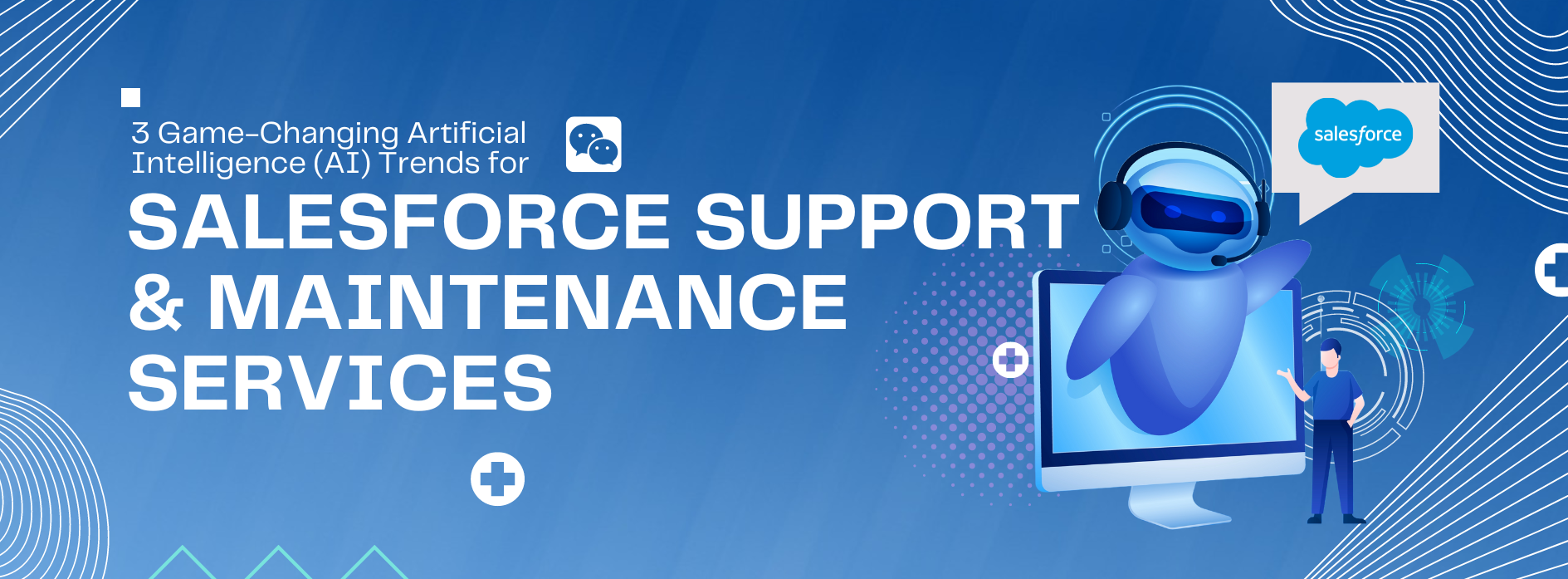Salesforce CRM has evolved a lot in the past few years. With the advent of modern technologies, Salesforce gets more improved and efficient with commendable functionalities.
With the evolution of technology, we can witness multiple changes in Salesforce and Marketing Cloud. But, amidst all the updates and changes, one thing remains constant, and it is the deployment process.
To simply put, the deployment is the final stage in any Salesforce project. It is the stage where changes made in one’s instance are pushed live.
Users or companies often get confused when it comes to the deployment process, and they generally take deployment in Salesforce CRM as deployment in the Marketing Cloud.
To enlighten us on the deployment process in the Marketing Cloud, we have Mr. Bhawani Sharma, CEO and Director of Fexle Services, who holds 13+ years of experience as marketing cloud experts.

In this tech talk session, he will answer some of the most common yet most interesting, and important questions, which users cannot find anywhere else.
So, do not miss anything till the end. Let’s start with our session:
Ques 1. Is there any difference between marketing cloud deployment and Salesforce CRM deployment? Are these two processes the same?
Ans 1. The Salesforce CRM deployment and the marketing cloud deployment are not the same and are quite different from one another.
Salesforce has its own deployment mechanism that comes with the playground environment, namely Sandbox, where users create an application, test the application, and deploy it once it gets ready.
On the contrary, if we talk about the marketing cloud, it does not come with a sandbox feature, and companies need to make proper arrangements for a sandbox-like environment where they can develop, test, and then deploy an application.
Generally, there are three ways in which companies can set up a sandbox environment in the marketing cloud:
-Using The Same Marketing Cloud Instance For Testing
In this situation, companies test their application in the same instance where it has been developed.
“And once the testing gets completed, they release it as production, which in my opinion is a prodigious and risky practice because after a certain period of time you will have dummy content collected in your production ready environment in abundance,” said Mr. Bhawani Sharma.
This practice is also risky because if a user misses anything, and sends dummy content to the actual audience even mistakenly, it will cause harm to the company’s image and brand value to a great extent.
-Creating a Different Business Unit in The Same Marketing Cloud Instance
In this situation, companies can create a different business unit in their marketing cloud instance and execute their entire testing process. Once the testing gets successfully completed, they can transfer their content from test business units to the production business unit. It is also a cost-effective way of content deployment in the marketing cloud.
Buying Another Marketing Cloud Instance
Last but not the least, this third option is one of the most preferred and the best option to set up a sandbox in the marketing cloud.
“I know, buying another instance of a marketing cloud obviously comes with an additional cost for the companies, but it will prevent users make any grave mistake”, added Mr. Bhawani Sharma.
So, we can say that there’s a stark difference between the deployment process in Salesforce CRM and the Marketing Cloud.
Ques 2. What Should Be The Ideal Process of Deployment in the Marketing Cloud?
Ans 2. Ideally, whenever a user is ready to go to the production stage in the Salesforce environment, one should collect all their components as a package in a single “built”, and then the combined package will go to the production.
If we talk about the ideal deployment process in the marketing cloud, then there is none, because there is no specific tool to execute the deployment process.
Still, to execute the content deployment in the marketing cloud, one can get everything deployed at the database level, where the content list and data extension goes onto the target org.
From here one will plan to move content (email templates, creative, audio files, video files, landing pages, etc.) to the production-ready instance and lastly, bring the audience to this production instance and develop a connection with the audiences, build audience journey, etc. at every touchpoint.
The types of content which we have mentioned above are the one which users want to send-out to the targeted customers.
Ques 3. Are there any tools in the market to handle the deployment process?
Ans 3. Initially, managing content and transferring the developed content from the sandbox to different instances was a daunting task.
Mr. Bhawani Sharma said, “Just imagine the initial situation where users used to migrate every single thing from one instance to another, manually. If they create a database onto the sandbox instance then they have to create the same database manually in the different instances. Here you can imagine how the duplicate efforts have hampered businesses’ time and cost.”
Still, in the present time, there is no tool in the market yet, which can perform the end-to-end deployment.
To help the community to avoid such a situation, Salesforce Lab, which is a Salesforce initiative, has come up with a tool called Deployment Manager.
Deployment Manager by Salesforce Lab helps users to migrate their metadata up-to a certain level.
“When I say, a certain level, I mean that you cannot migrate everything, and the process still involves some manual efforts”, added Mr. Bhawani Sharma.
The second marketing cloud data deployment tool, which helps in content migration, is called Nube Transfer. This utility is exclusively designed and developed by Fexle Services.
“Though the Deployment Manager was there to handle the deployment of data extension, journey builder, etc. but, there was no solution for the marketing cloud, for content migration. Hence, Fexle went ahead after learning the problems of customers, and we created Nube Transfer.” Explains, Mr. Bhawani Sharma.
Features of Nube Transfer
– It allows an easy selection of the content from the source organization.
– It enables seamless deployment of content into the targeted organization.
– Users can track the deployment status in real-time.
– Nube Transfer as the first-ever content migration tool automates the deployment process & reduces human errors.
– It helps you avoid dependencies on different factors.
– This marketing cloud content migration creates a package of all the content and migrates it from one BU to another without letting you depend on any dependencies.
The significant functionalities of Nube Transfer include:
– Migration between separate instances
– Migration between different business units
– Merging Instances
– Org Split
– Org Clean up, and
– Enhanced security
Ques 4. Where do you see these deployment tools after 5 years?
Ans 4. As mentioned earlier that initially there were no utilities that could handle the deployment process, so it is safe to say that both these tools have a great future, for sure.
The advent of Nube Transfer and Deployment Manager has revolutionized the Salesforce community.
These two tools have opened a new world for marketing cloud deployment tools. The future indeed holds lots of possibilities and opportunities for the content deployment tools where users can expect Nube Transfer to evolve as an end-to-end solution provider.
Final Note
It was great to learn and know so many different things about the marketing cloud content deployment process.
Above all, it was great to know that Fexle, has continued its legacy of innovation and developed the world’s first marketing cloud content migration tool, which will not only save 98.5% of the time of the users but also reduce the error-prone manual efforts.
It was again an enlightening session with Mr. Bhawani Sharma. We got to know so many new things about the marketing cloud and its deployment process.
We will return with another tech talk session very soon, till then you can share this post with your friends and help them get enlightened.









